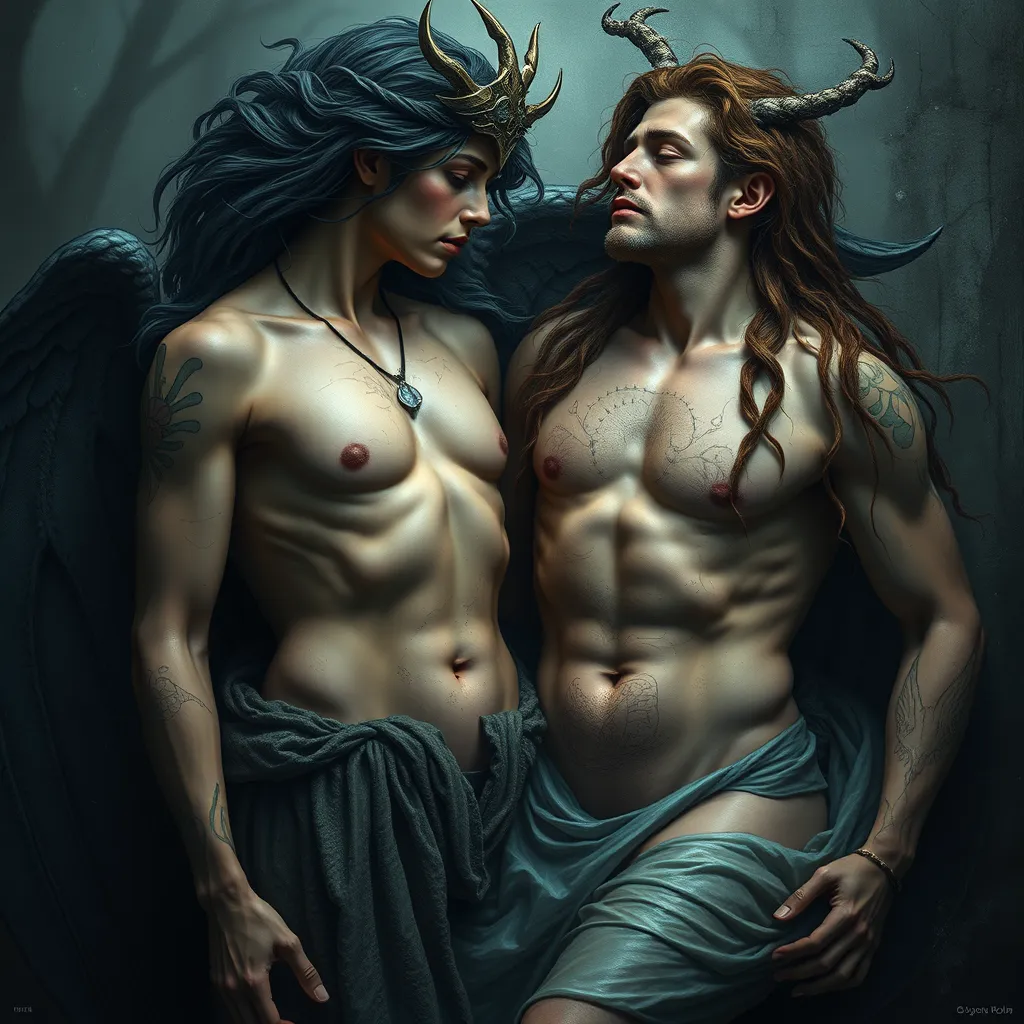Where Myth Meets Reality: The Enduring Legacy of Skinwalkers
I. Introduction
Skinwalkers are a prominent figure in Native American folklore, particularly within Navajo culture. Defined as witches who have the ability to transform into animals or possess animal traits, the concept of Skinwalkers encompasses a complex array of beliefs about the supernatural and the spiritual world. These beings often evoke fear and intrigue, making them a topic of both fascination and caution among those who hear their tales.
The cultural significance of Skinwalkers extends beyond mere superstition; they represent deep-rooted beliefs about morality, the natural world, and the consequences of violating societal norms. This article aims to explore the intersection of myth and reality surrounding Skinwalkers, examining their origins, characteristics, contemporary representations, and the ongoing legacy they hold in modern society.
II. Historical Background of Skinwalker Legends
The origins of Skinwalker legends can be traced back to the Navajo people, where they are known as “yee naaldlooshii,” which translates to “with it, he goes on all fours.” Historically, these legends have been passed down through generations, evolving in their meanings and implications. The Skinwalker myth is not only confined to the Navajo culture but has parallels in various Indigenous cultures across North America.
Over time, the mythology surrounding Skinwalkers has changed due to cultural exchanges and the impacts of colonization. These stories often serve as cautionary tales, warning against the dangers of straying from traditional values. Comparatively, other cultures have similar mythical beings, such as werewolves in European folklore or shapeshifters in various Indigenous tribes, indicating a universal fascination with transformation and the supernatural.
III. Characteristics and Abilities of Skinwalkers
Skinwalkers are often depicted as individuals who can transform into various animals, such as wolves, coyotes, or birds. This transformation is said to occur through dark magic, which is typically associated with malevolent intentions. The transformation process is shrouded in mystery, with many believing that one must have specific knowledge or training to become a Skinwalker.
Common traits and behaviors attributed to Skinwalkers include:
- Stealth and agility, making them effective hunters.
- Ability to mimic animal sounds to lure victims.
- Manipulation of the environment to create fear or confusion.
In Skinwalker lore, animals hold significant symbolism. The choice of animal for transformation can reflect the Skinwalker’s personality, desires, or even their moral standing within the community. For instance, transforming into a powerful predator may symbolize dominance, while choosing a scavenger might indicate deceit or trickery.
IV. Psychological and Sociological Perspectives
The myth of Skinwalkers is deeply intertwined with human psychology and societal norms. Fear of the unknown often fuels the belief in such supernatural entities. Skinwalkers embody the anxieties surrounding transgressions of cultural taboos, particularly regarding witchcraft and the misuse of knowledge.
Moreover, Skinwalkers can be viewed as metaphors for societal issues, such as the struggles of identity, loss, and betrayal. They can represent the consequences of abandoning traditional values or the fear of those who do not conform to societal expectations.
Psychologically, the belief in Skinwalkers may stem from a need to explain unexplainable events or tragedies. When faced with loss or misfortune, attributing these events to supernatural forces may provide a sense of control or understanding in a chaotic world.
V. Modern Interpretations and Representations
In contemporary culture, Skinwalkers have found their way into various forms of media, including films, television shows, and literature. Productions often dramatize the myth, sometimes straying from its original cultural significance. Notable examples include horror films that exploit the fear surrounding Skinwalkers for entertainment value.
Social media has also played a role in the spread of Skinwalker legends, with urban legends and personal testimonies circulating widely. Online forums and platforms often feature stories from individuals claiming to have encountered Skinwalkers, further blurring the lines between myth and reality.
VI. Cultural Sensitivity and Misrepresentation
As Skinwalker stories gain popularity in mainstream media, it becomes essential to approach their representation with cultural sensitivity. Misunderstandings and appropriations of Native American culture can lead to distorted perceptions of these beliefs. Many Indigenous communities express concern over the portrayal of Skinwalkers in popular culture, arguing that it often lacks respect for the traditions and meanings behind the stories.
Voices from Indigenous communities highlight the importance of accurate representation, emphasizing that Skinwalker tales are not merely entertainment but are deeply rooted in cultural identity and spirituality. It is crucial to listen to these voices and acknowledge the complexities of the narratives that have been historically marginalized.
VII. The Enduring Legacy of Skinwalkers
The stories of Skinwalkers continue to hold relevance in today’s society, serving as a bridge between past and present. They illustrate how folklore can adapt to modern contexts while preserving cultural traditions. In many ways, the Skinwalker myth reflects the ongoing struggles of Indigenous peoples to maintain their cultural identity amidst a rapidly changing world.
Preservation of folklore is vital for cultural survival, and storytelling remains a powerful means of passing down traditions and teachings. The Skinwalker narrative exemplifies how these stories can be used to instill values, convey moral lessons, and foster community bonds.
VIII. Conclusion
In summary, the exploration of Skinwalkers reveals a rich tapestry of myth and reality. The historical roots, characteristics, and psychological implications of these legends highlight their significance beyond mere superstition. As we reflect on the balance between myth and reality, it becomes evident that Skinwalkers represent more than frightening tales; they embody complex cultural narratives that continue to shape identities and values.
The enduring fascination with Skinwalkers speaks to humanity’s intrinsic desire to understand the unknown and the supernatural. Ultimately, the legacy of Skinwalkers reminds us of the power of storytelling in preserving culture and fostering connections across generations.



